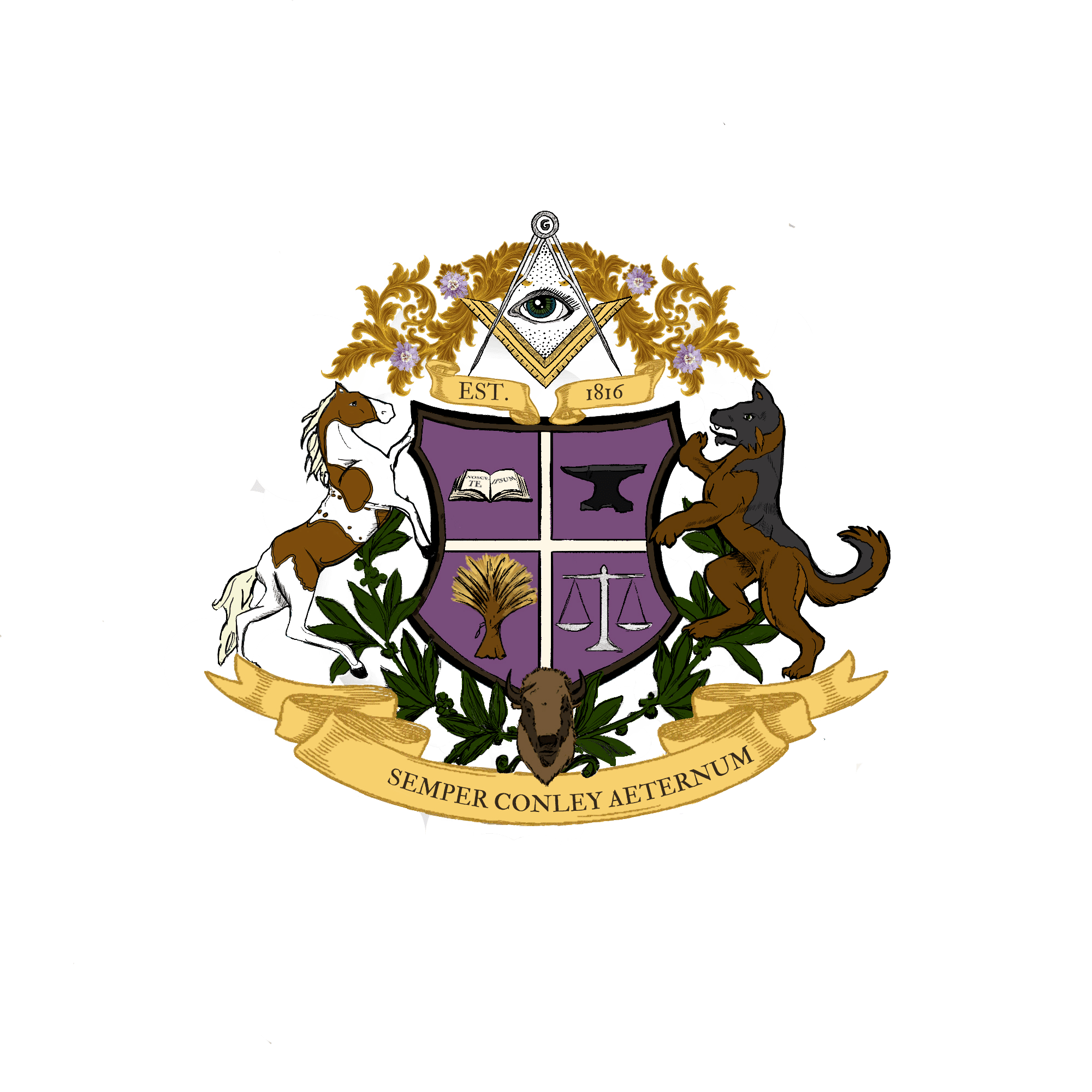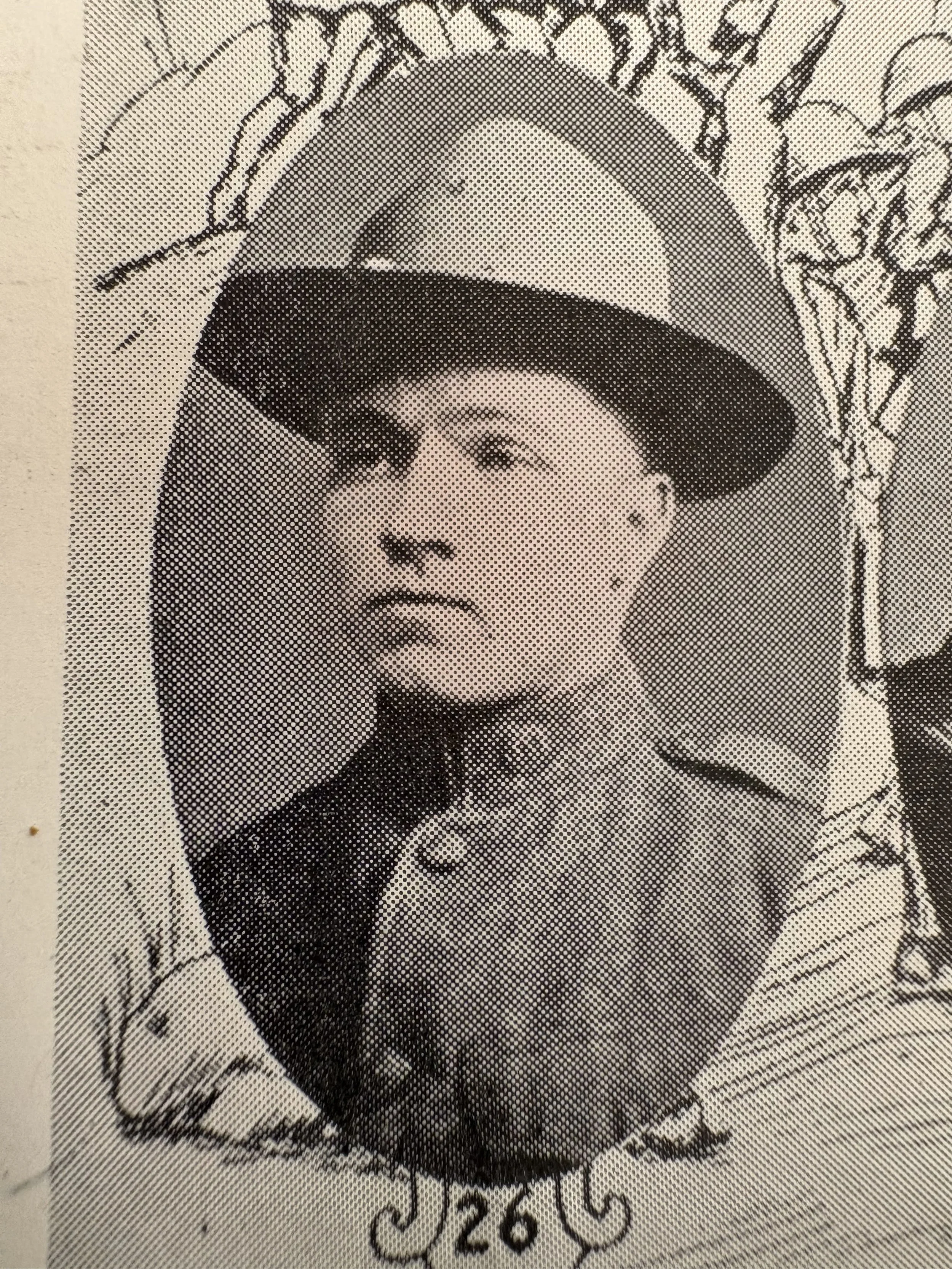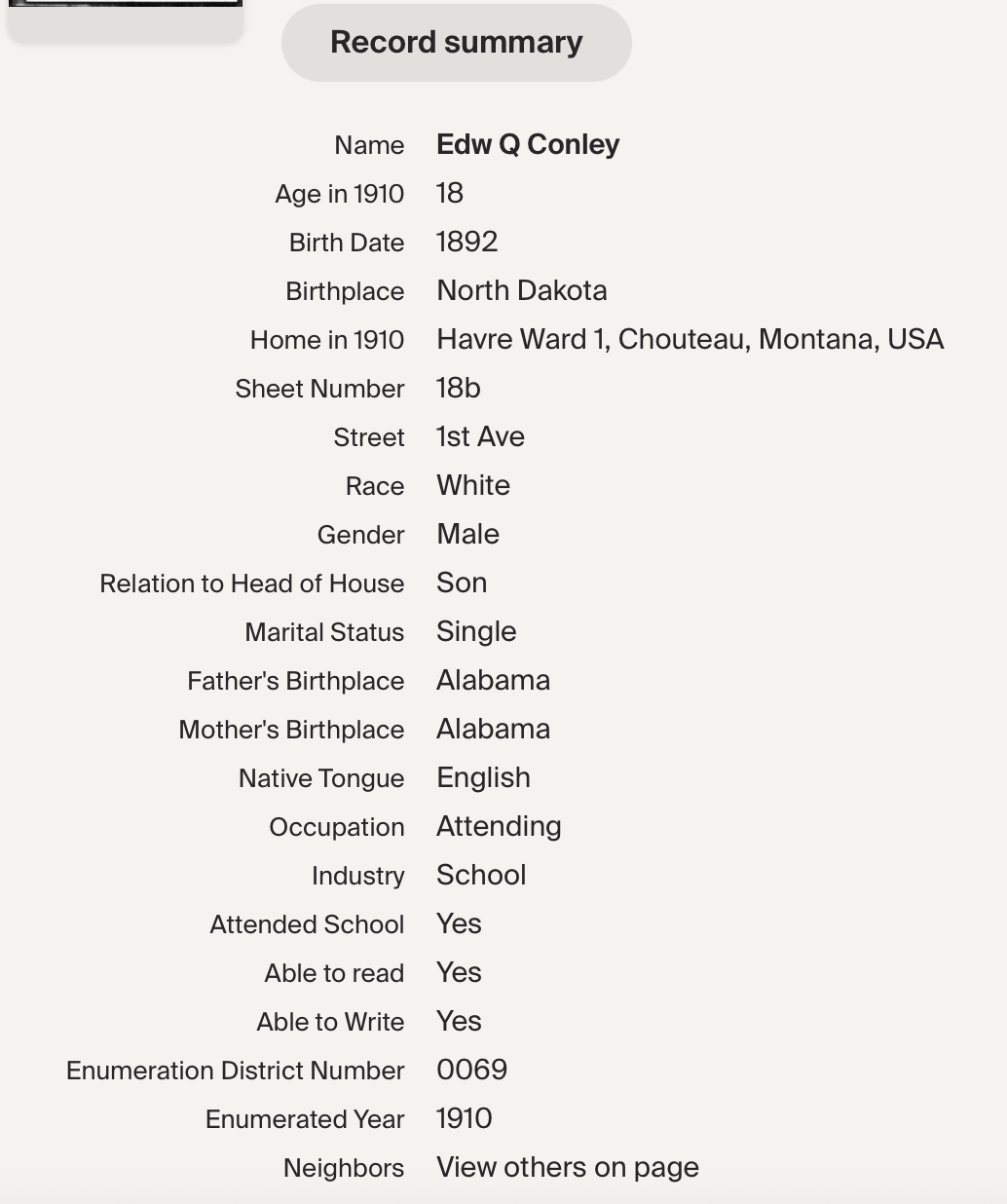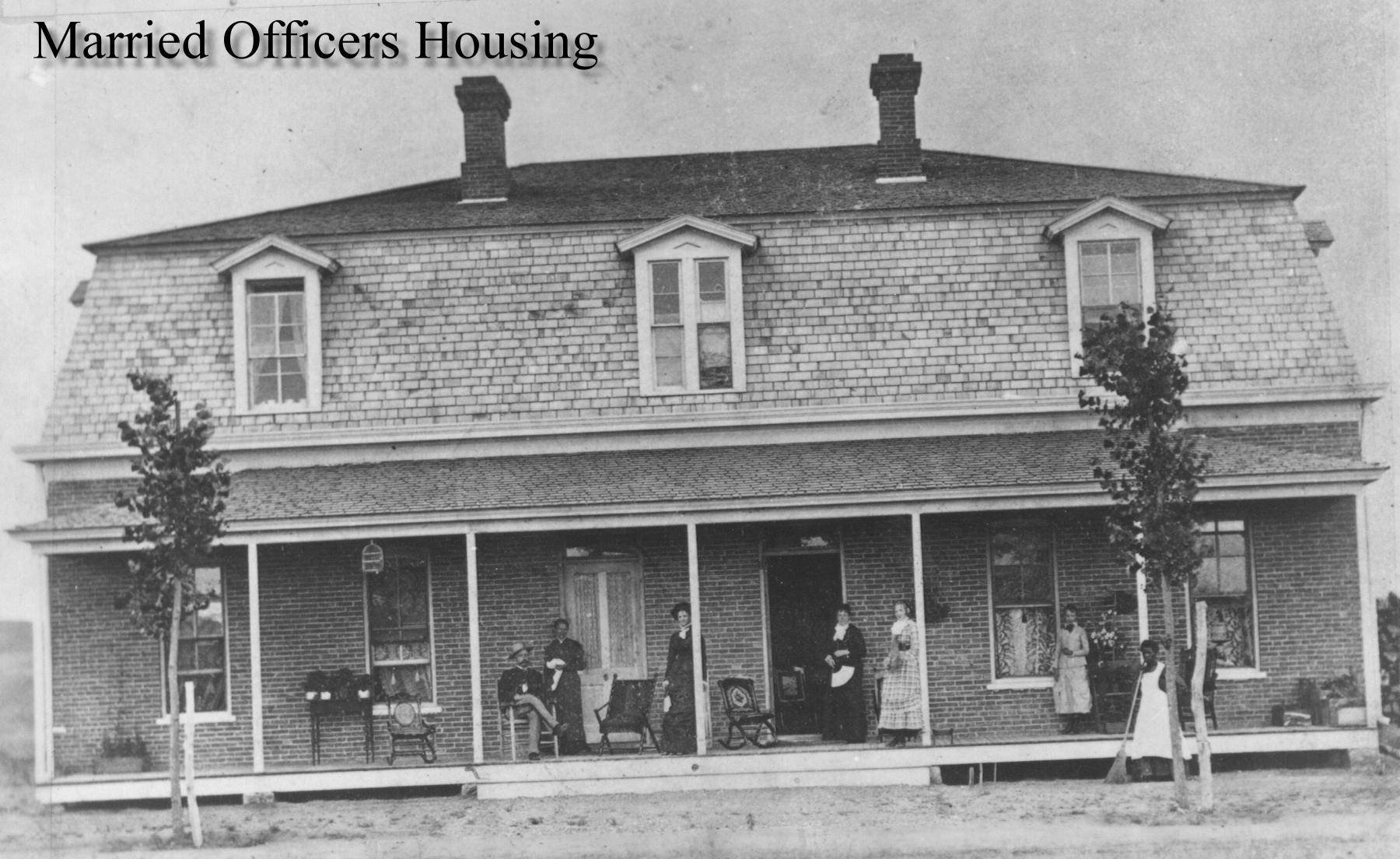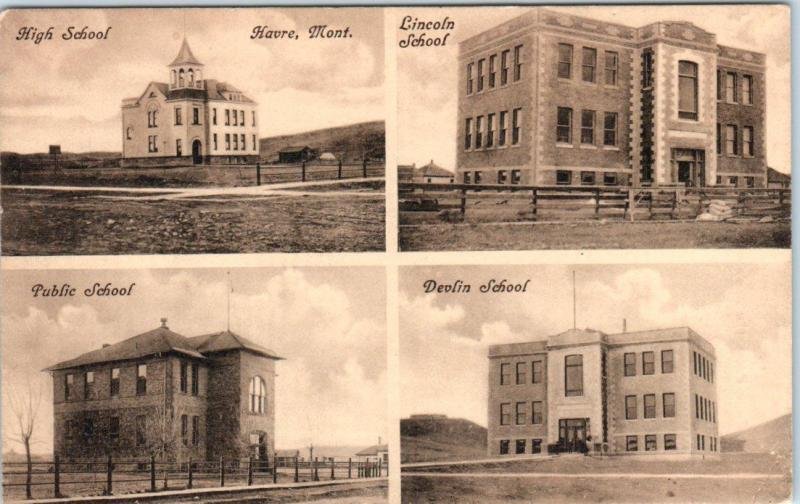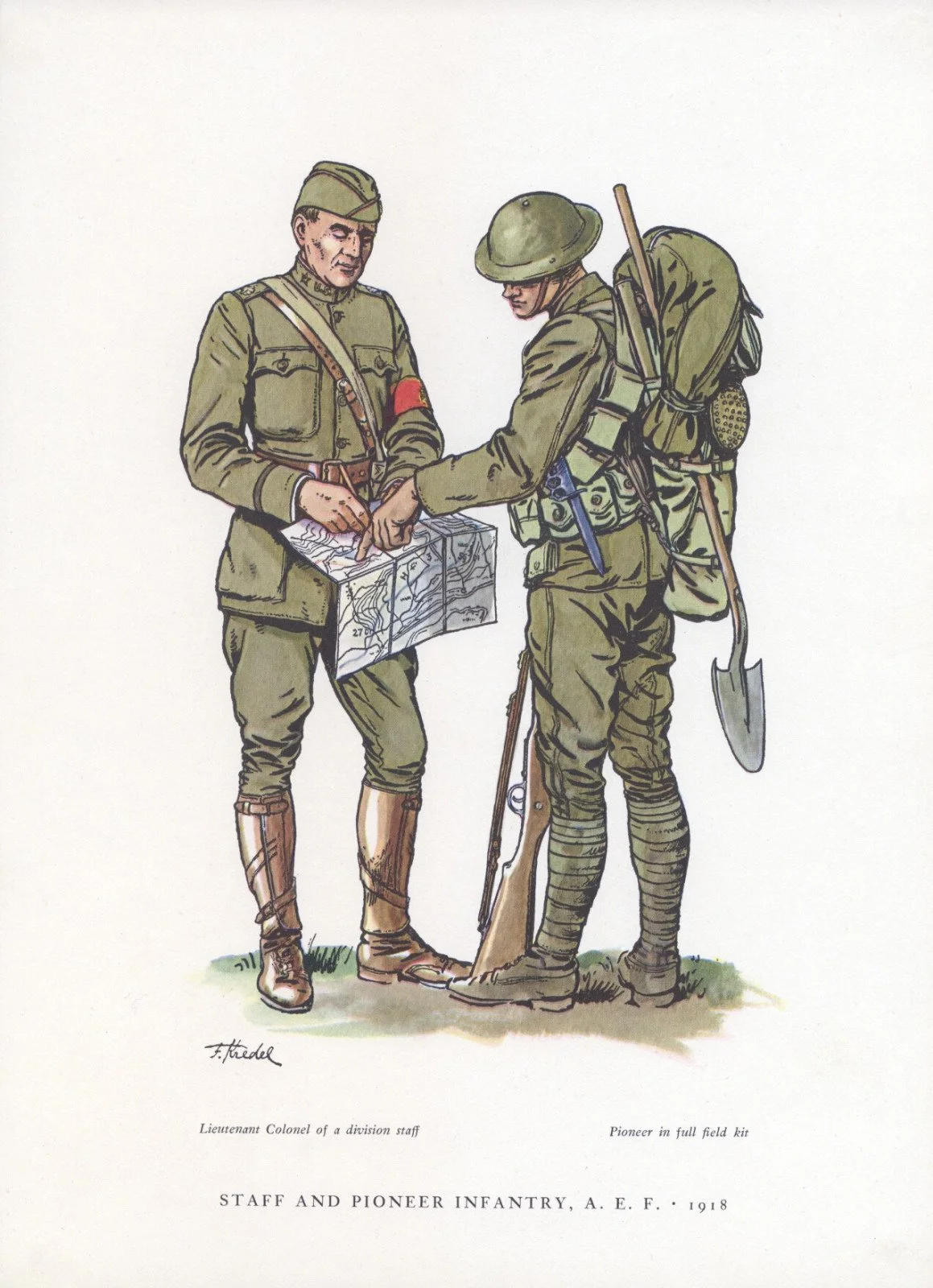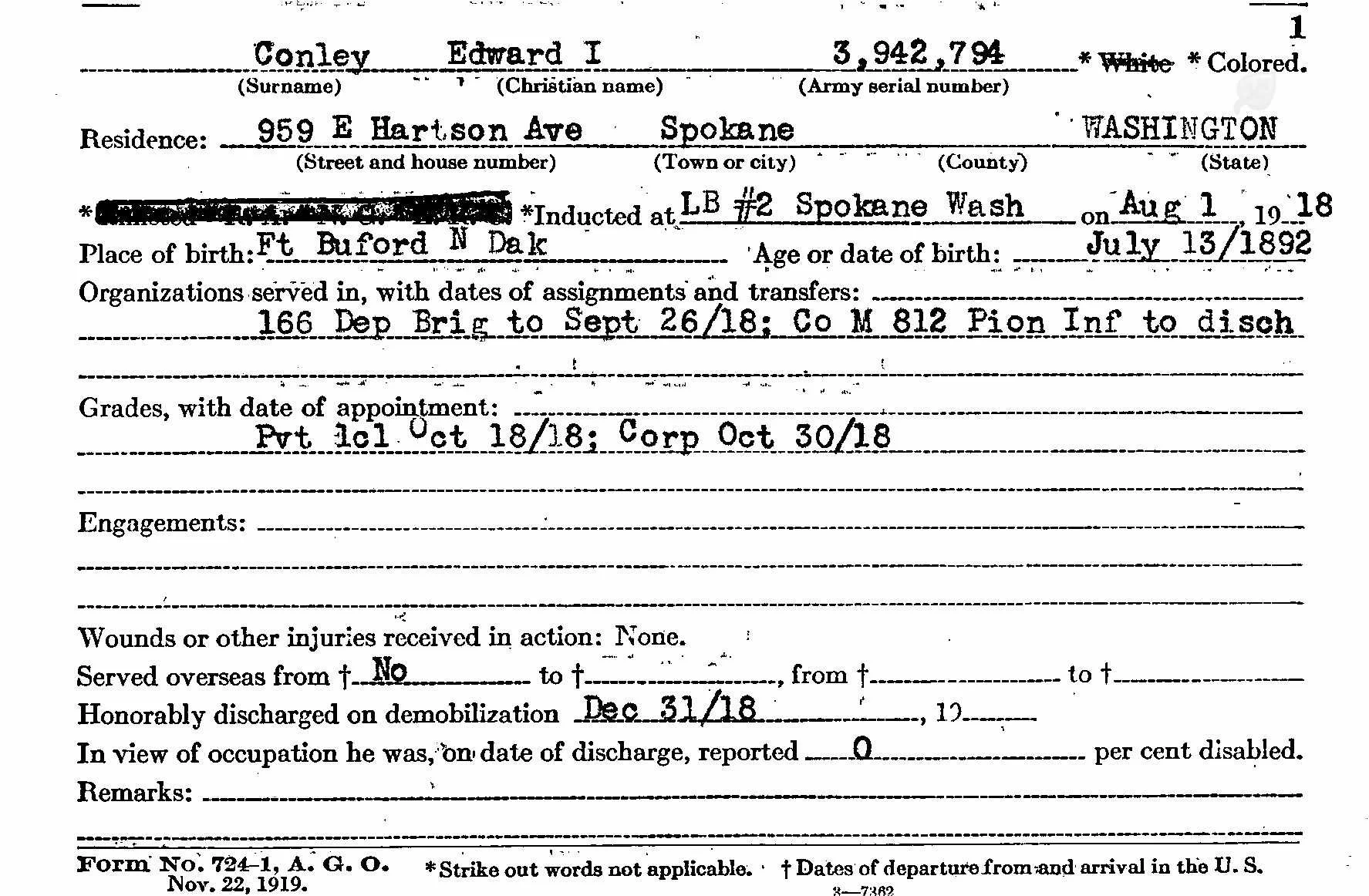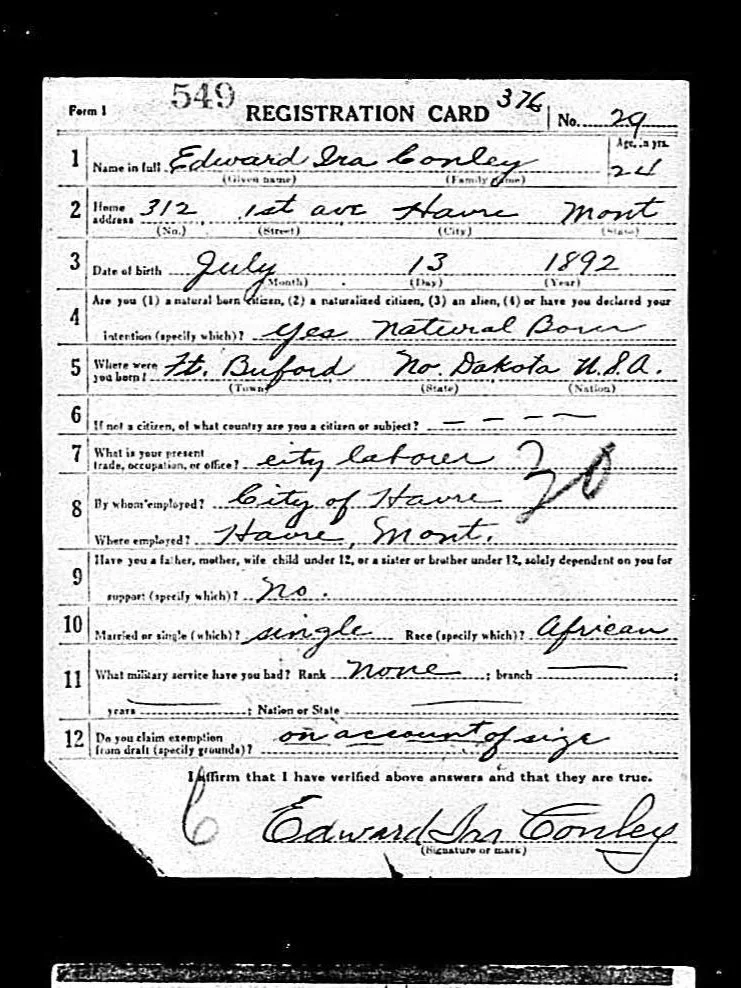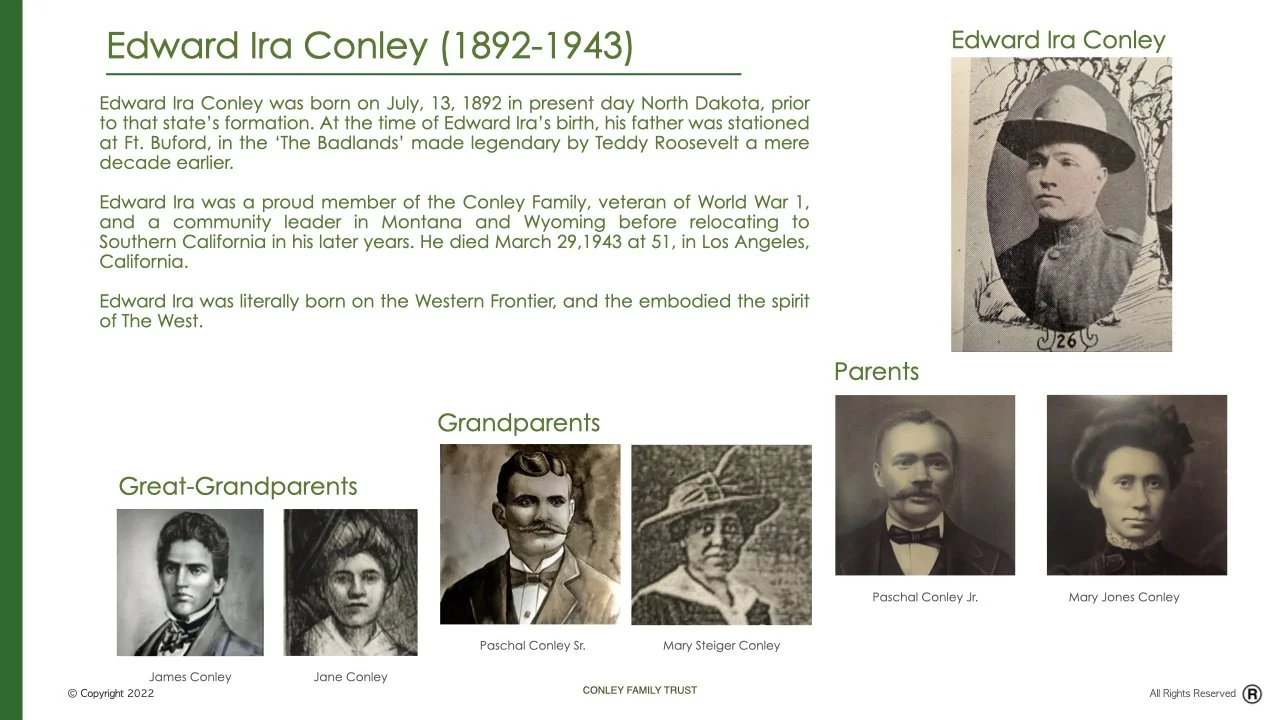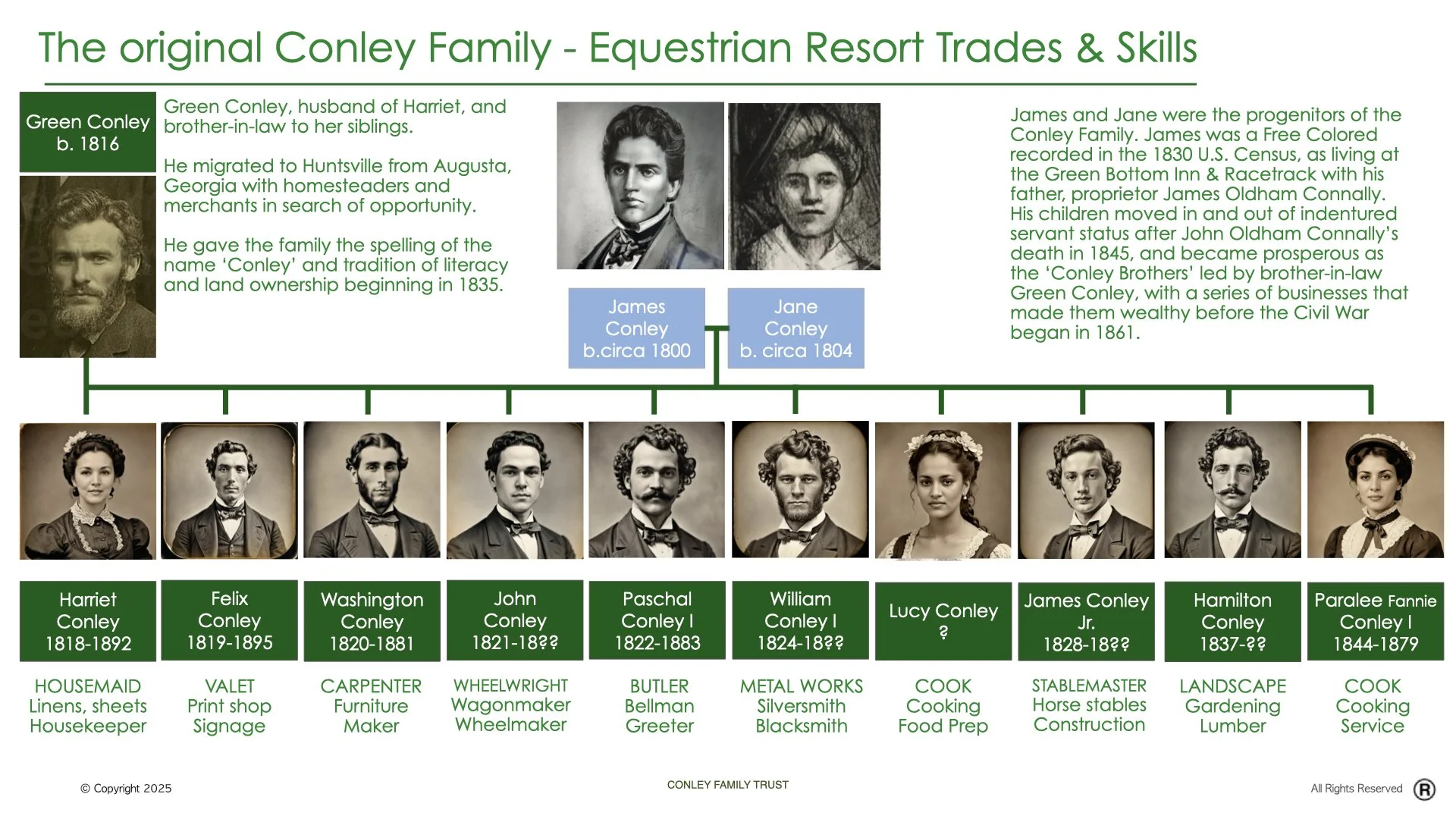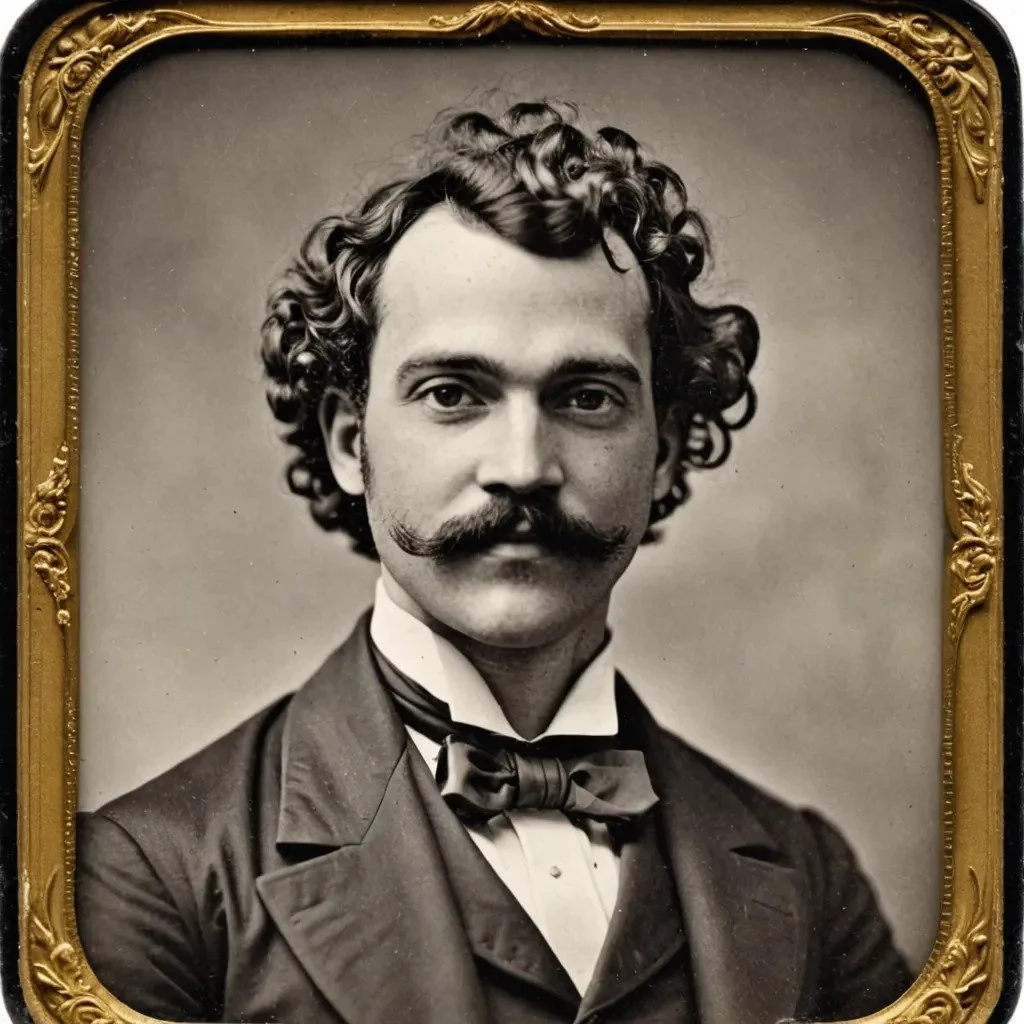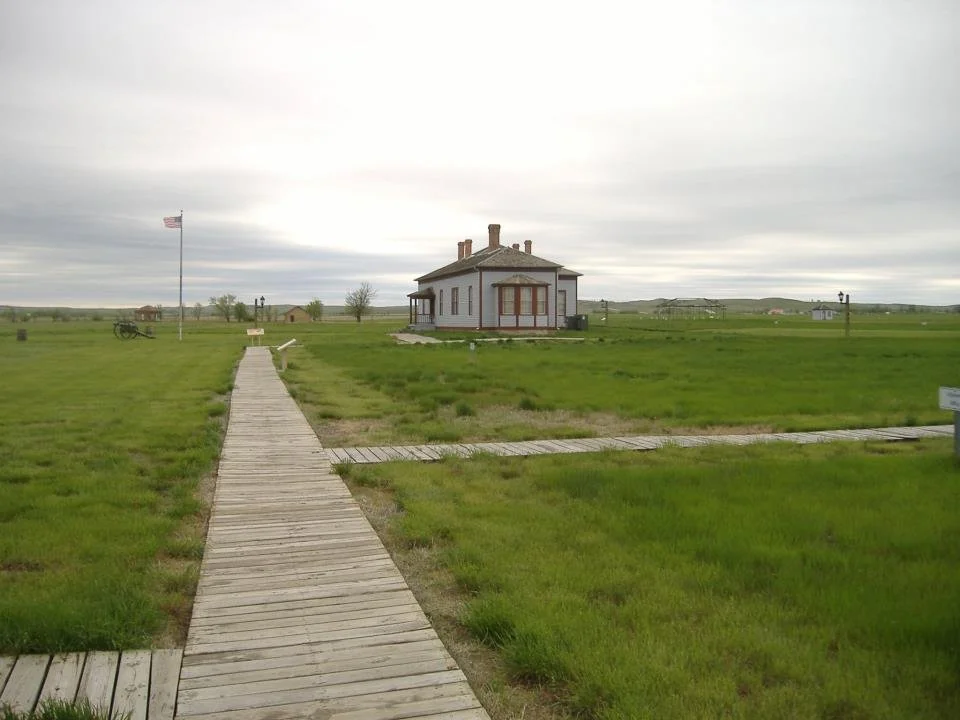EDWARD IRA CONLEY (1892-1943)
SUMMARY
Edward Ira was a World War 1 veteran, Federal Marshal, Post Master, in Montana, Wyoming, and Washington State.
Edward Ira was the third child and second son of famed Quartermaster Sergeant Paschal Conley Jr. of the Buffalo Soldiers. His mother was Mary Jones Conley.
While traveling across the Upper Midwest on the Northern Pacific Railroad, from Oregon to Idaho, through North Dakota, and to Minnesota, he was often treated as any White man would be. This undoubtedly helped him execute his duties as a military guard and Federal Marshall protecting gold, silver, gems, currency, bank notes, and transporting dangerous outlaws who characterized the Wild West.
Enlistment: 1914
Branch: U.S. Army
Division: 812th Pioneer Infantry Regiment, United States Army, World War I
Highest Rank: Colonel
Theater: World War I
EARLY YEARS 1892 - 1900
Edward Ira Conley with this mother and siblings. Clockwise: His mother Mary Jones Conley; sister Mattie Conley (Davis); brother Paschal Conley III; Edward Ira Conley; Charles Hamilton Conley.
In retirement, Paschal and his beloved wife Mary began taking part in the social life of the town. In 1907, Paschal became as the president of the Colored Co-operative League for the region. His wife Mary was elected the treasurer.
Edward Ira Conley grew up on Fort Assinniboine in Havre, Montana as a child. At 14, his family moved into the nearby town of Havre.
Life was predictable and safe on the Fort, but not easy at all. The Fort was once one of the most important forts in the U.S., with 10 companies of infantry and cavalry. It encompassed 704,000 acres and 104 buildings, with a bakery, laundry, blacksmith, general store, chapel, post office, hotel, library, hospital and a school. Although the fort was a self-sustaining compound, the weather was harsh.
Edward didn’t see his father much as a child. Lieutenant Conley was on duty most of the time, and rarely at home. He was at Colonel Pershing’s side on one expedition after another across the American West, culminating with the Spanish-American War in Cuba. He retired in 1906 after his posting at Fort Robinson in Nebraska.
In 1905, life changed for Edward Ira at 14 years old. The Conley Family moved into Havre, in 1906. He performed well in high school, as his father Pashcal Jr. began spending a great deal more time with his family. He became a substantial land owner in town, building four different houses. Paschal’s prominence grew which created more opportunity for his children.
Meanwhile, Fort Assinniboine closed in 1911.
1905-1910 HIGH SCHOOL DAYS OF EDWARD IRA CONLEY
This postcard shows the neighborhood where the Conley compound was located in central Havre. Charles lived at the end of this block with his parents and siblings. There were four structures in the compound, which was built between 1905 and 1914. His father Lt. Paschal Conley was a leading citizen of Havre, and owned property throughout northern Montana along the board of Canada.
The Conley children (Mattie, Charles, Edward, and Paschal III) all attended school in Havre. Beginning in his youth, Charles, his sister Mattie and brother Edward were cited as academic stars in the public schools of Montana. They were model students praised for their intellectual abilities and fine manners. Newspaper articles tracked the academic performance of the Conley children, and held them up as model minorities. (Reference: “Winners of Credit Marks”, Havre Herald. “Report of Schools for September”, Havre Herald. “The School Report for February”, Havre Herald.)
1910 - 1920
When Edward Ira finished high school, he attended college for 2 years. In 1914, he went to work for the Northern Pacific Railway.
1918 at 26 years old, Edward Ira is living in Spokane
World War One Draft registration Card, 1917.
Charles Conley traveled the entire Northern Pacific rail network. He served in a role that combined Customs Officer, U.S. Marshall, Public Notary, and Postal Clerk. He was a faithful public servant, and well-respected in towns across the upper MidWest and Mountain States. He was a familiar face from Seattle to St. Paul.
ORIGINS OF Edward Ira CONLEY
1800-1845: GREAT GRANDPARENTS OF EDWARD IRA CONLEY
James & Jane CONLEY
The core of Edward Ira Conley’s story begins with the Green Bottom Inn & Equestrian Center. There, Edward Ira’s great-grandparents, James & Jane Conley, managed the resort’s operations and staff.
James Conley was initially trained as coach and carriage driver, then as an ‘avener’ and equerry, managing all of the horse and stable matters. His son, Paschal, was his ‘Groom’ caring for the horses.
The owners of many Southern equestrian sporting centers wanted their operations managed in the tradition of European nobles. This meant an avener reported to the stable master with complete responsibility for the horses, including walking and training schedules, feeds, and veterinary care.
All of this allowed James Conley’s son, Paschal Conley Sr., to be trained as a stable and livery manager. Young Paschal Sr. would greet the guests’ horse-drawn carriages and tend to them for the duration of their stay. His brothers would repair the coaches and their wheels, paint them as needed.
After the death of James Conley’s father, Green Bottom resort founder, John Oldham Connally, in 1845, the resort closed. The Conley siblings took their various trade skills to the market as entrepreneurs. The children of James & Jane Conley would eventually accumulate considerable wealth by selling their skills throughout the Tennessee Valley and the Western frontier.
1845-1890: GRANDPARENTS OF EDWARD IRA CONLEY
Paschal & Mary CONLEY
Upon the death of John Oldham Connally in 1845, Paschal was around 22 years old. With his brothers, they formed a stable construction company, building stables and barns to west of Alabama and up into the Ohio Valley. Paschal took his earnings from stable building, and opened a livery stable operation in downtown Huntsville, near the Madison County Courthouse.
Paschal Conley Sr. & Mary Steiger Conley, parents of Paschal Jr.
Paschal Conley Sr. quietly owned a livery stable in downtown Huntsville, and many other businesses with his brothers. Downtown, he shared a building with his business partner Levi Scruggs, a popular Colored barber to the wealthy. Levi Scruggs’s son would eventually marry Jessie Lee Conley, Paschal’s granddaughter.
Paschal Conley Sr. as a Livery & Stable Operator. Although often categorized as ‘White’, he was a grandee of the Black community of Huntsville before the Civil War era began in 1861.
1880-1900 EARLY CHILDHOOD IN THE WEST
The Parents of Edward Ira Conley were his father, Sgt. Paschal Conley Jr. and Mary Jones Conley. His father Sgt. Paschal was the son of Paschal Sr. and a popular Buffalo Solider with the 24th Calvary at the time of Edward’s birth.
Marriage certificate of Paschal and Mary Jones in Huntsville, Alabama 1884.
Paschal Conley Jr., father of Charles H Conley. He was born in Alabama in 1858, joined the Army in 1878 as a private in the 24th infantry company ‘H’ of the famed Buffalo Soldiers. He worked mainly as a regimental clerk at Fort Supply in modern day Oklahoma until 1884.
Mary Jones Conley, mother of Charles H. Conley. Paschal married Miss Mary Jones on April 20th 1884. After their marriage, Paschal re-enlisted and with every station, Mary followed him.
Edward Ira Conley was born in the ‘Wild West’ at Fort Buford in North Dakota in 1892.
Fort Buford is today a national monument to the spirit of the settlers of the Western Frontier.
Fort Buford, current-day North Dakota. Birthplace of Edward Ira Conley in 1892.
“We can see this correlation in comparing his station details and the births of his children. Mattie was born in 1887 in ‘Indian Territory’, Charles was born at Fort Bayard, New Mexico in 1890, Edward was born at Fort Buford in North Dakota Territory in 1892, and finally Paschal Jr. was born in Montana 1894.” (extracted from the Smithsonian Historical Properties description.)
Beginning in 1888, the 24th and 25th Infantries and the 9th and 10th Cavalries would be stationed throughout Montana at Fort Missoula, Fort Keogh, and Fort Assiniboine where the legendary General John “Black Jack” Pershing (1860-1948) would have one of his first commands leading Buffalo Soldiers. This is how the Paschal Conley branch came to settle in Montana.
